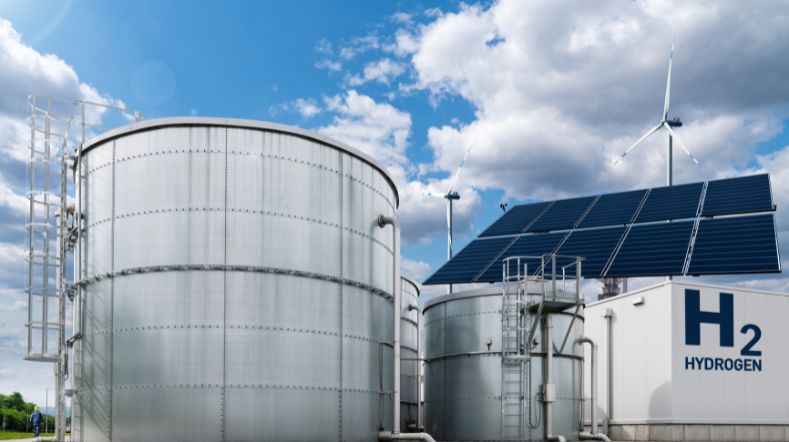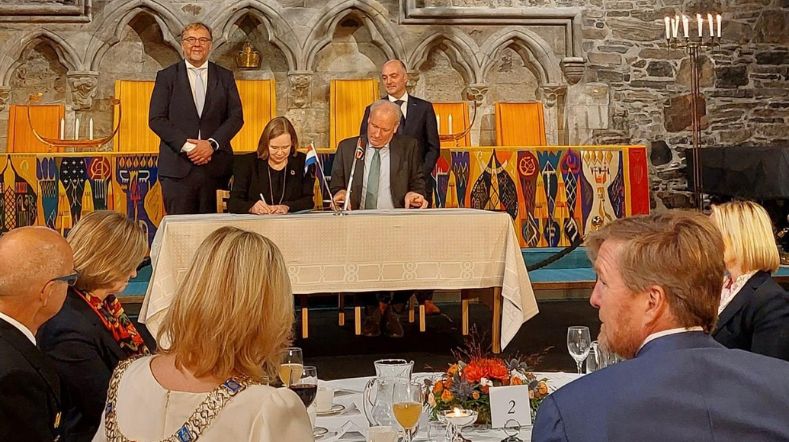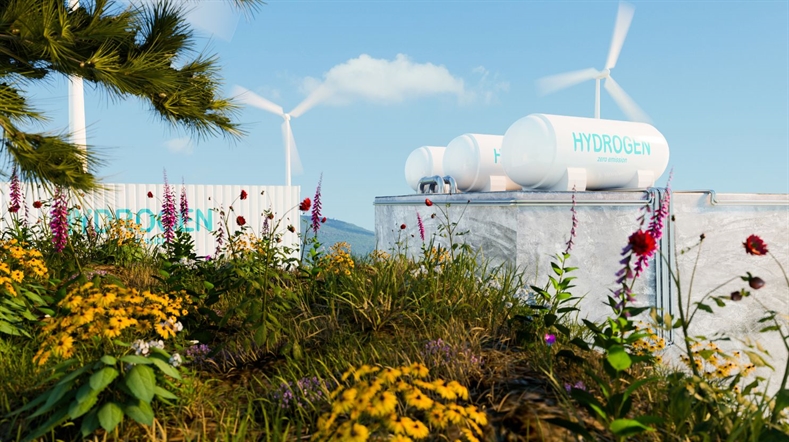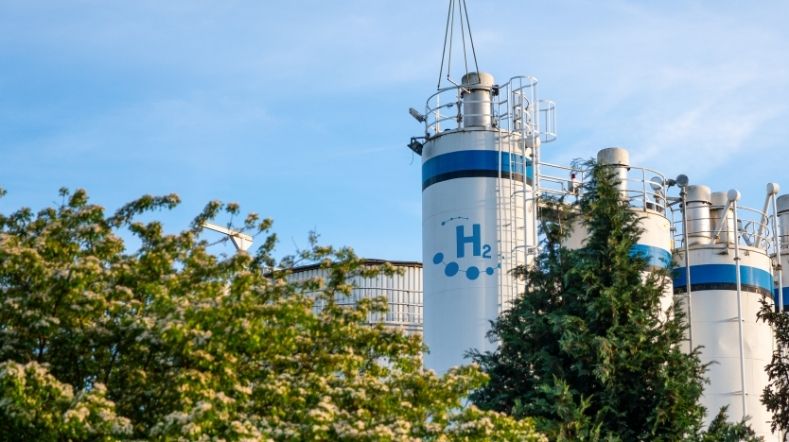Towards Dutch-German hydrogen value chains: synergies for decarbonised industry and Mobility
Three research institutes; Forschungzentrum Jülich (Germany), German energy agency - dena (Germany) and TNO (the Netherlands), have jointly cooperated under the project named HY3 to provide the insights into what a transnational hydrogen economy might look like in 2050. This project was commissioned by Federal Ministry for Economic Affairs and Climate Action of the Netherlands, North Rhine-Westphalia (NRW) and the Federal Republic of Germany. The request was to investigate the feasibility of a transnational green hydrogen value chain that spans across the North Sea through the industrial clusters of the Netherlands and North Rhine-Westphalia.
Read the conclusions in the report
HY3 - Large Scale Hydrogen Production from Offshore Wind to Decarbonise the Dutch and German Industry
Developing hydrogen market and infrastructure
The HY3 project explored several facets of the hydrogen value chains for connecting hydrogen production at the Dutch and German North Sea with demand centres in Netherlands and North Rhine-Westphalia. Key finding of the study is that cooperation between the Netherlands and Germany in developing a common hydrogen market and infrastructure boosts opportunities for realising a decarbonised regional economy.
Cooperation opens up a large-scale market for green hydrogen
The most promising industry sectors for green hydrogen usage are those that already use hydrogen as a raw material or fuel today. Prospects for demand are for example basic chemical industries for ammonia and methanol synthesis, naphtha production in refineries, as well as steel, cement and glass production. In the transportation sector hydrogen can be used in various types of fuel-cell electric vehicles (buses, trains, heavy-duty vehicles and passenger cars).
Current industrial applications in Petro-chemical and chemical industry in North Rhine-Westphalia (NRW) and the Netherlands have a substantial hydrogen demand of 17 TWh and 41 TWh per year, respectively. By 2050, total demand for the studied sectors in NRW reaches up to 162 TWh and 239 TWh in the Netherlands. In the considered scenario, a common market of both NRW and the Netherlands more than doubles the potential hydrogen demand of each region thus increasing the opportunity for a large-scale market for green hydrogen. Dutch-German cooperation will be beneficial to build up and connect the markets for hydrogen in NRW and the Netherlands.
Domestic production and import of hydrogen on a steep growth path
For this study, it was assumed that green hydrogen is produced using electrolysis of fresh or desalinized seawater, powered by renewable electricity from offshore wind sources in the North Sea. By 2050, annual hydrogen production from offshore wind reaches 54 – 139 TWh for the Netherlands and 37 – 100 TWh for Germany.
Connected transport and storage infrastructure
Both the Dutch and German natural gas transmission grid operators have published their visions of a national hydrogen backbone. To analyse the transnational hydrogen infrastructure the envisioned hydrogen backbone of the respective national TSOs was taken as the starting point, which comprised of more than 5000 km of converted natural gas pipelines. The study found that by partially repurposing the natural gas pipelines for hydrogen transport in the Netherlands and Germany yields sufficient transport capacity until 2030. After 2030, bottlenecks could occur in certain regions around hydrogen import harbours.
The development of hydrogen storage in existing and new salt caverns in both the Netherlands and Germany will be a useful and necessary balancing asset for offering flexibility to the energy system. In 2030, 1-5 caverns will be needed that each are able to store 250 GWh of hydrogen, with this number increasing to at least 49-57 caverns by 2050 exclusively for hydrogen storage.
Action is needed
To foster identified opportunities it is necessary to:
- Spur joint initiatives to establish a common market;
- Remove regulatory barriers;
- Development of common vision for hydrogen infrastructure;
- Cross border collaboration on industrial transformation;
- Establish joint R&D and innovation initiatives and establish binational projects with net benefits to the Dutch and German energy systems.
Andreas Kuhlmann, CEO DENA:
"The HY3 research has shown that efforts can and should be made at European level to expand the use of hydrogen. The joint deployment of production capacity and infrastructure in the context of cross-border cooperation helps regions to transform their societies and industry In addition, HY3 shows that the supply of near- and offshore produced hydrogen can be supplemented with imports via ports in the Netherlands and Germany.In addition to a shared vision, a special degree of cooperation and support is needed for cross-sectoral and cross-border projects and obstacles must be overcome. removed due to legislation and regulations. In that regard, we are also very pleased with the recent call from Federal Minister Robert Habeck in Brussels to expand European cooperation on pioneering green hydrogen technology."
René Peters, Director Gastechnologie TNO:
“The use of hydrogen to decarbonise industry and transport is more likely to accelerate if it can be applied on a northwestern European scale. The HY3 study not only shows the value of building a connected infrastructure for hydrogen transport, laying on the basis of the existing gas pipelines in the Netherlands and North Rhine-Westphalia, but also that both regions would benefit greatly from developing green hydrogen production from offshore wind, importing hydrogen in certain ports and options for large-scale hydrogen storage in salt caverns in the border regions. The Netherlands and Germany can accelerate the large-scale deployment of hydrogen by developing an interconnected infrastructure for hydrogen transport and storage."
Disclaimer
This study did not yet take into account the ambitions of the new governments and the European Commission's 'Fit for 55' package. Fit for 55 refers to the EU's target to reduce net greenhouse gas emissions by at least 55% by 2030.
Get inspired
Hydrogen in the energy system: The future of sustainable energy in the Netherlands and Europe


NORCE and TNO are entering into a strategic partnership on hydrogen developments


Dutch consortium participates in EU research project on large-scale hydrogen storage in depleted gas fields


Underground hydrogen storage


Collaboration TNO and Elcogen for development Solid Oxide Electrification Technology in Europe


